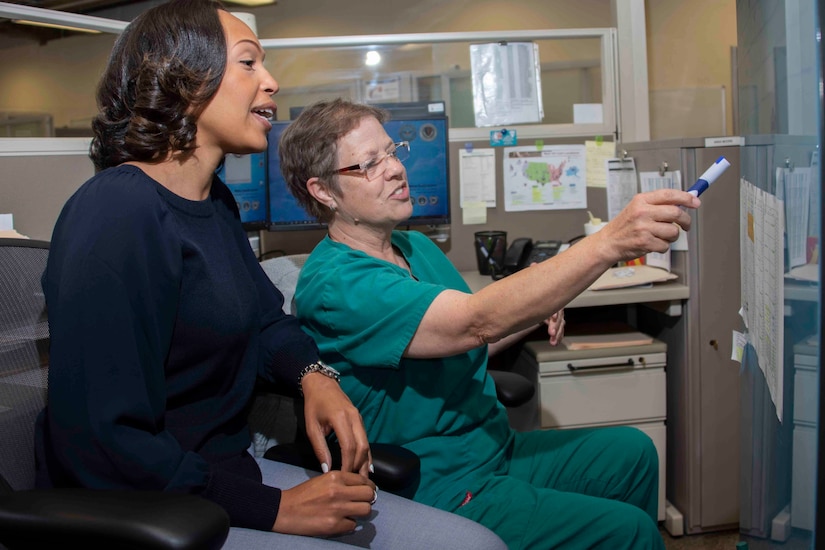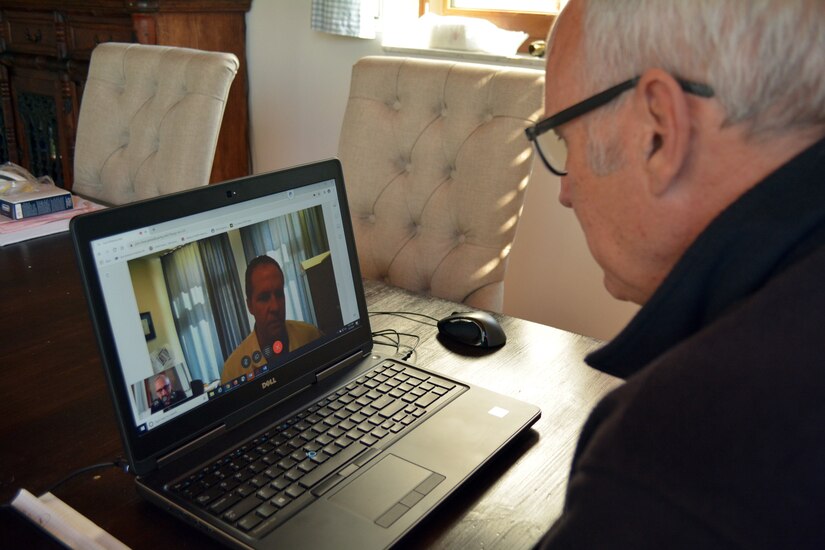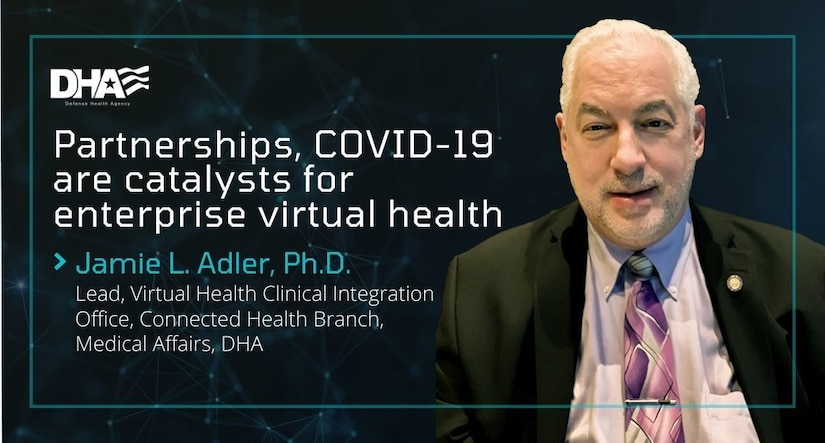Jan. 20, 2021 | , Defense Health Agency
In the pre-COVID-19 world, nearly all health care was delivered in person within brick-and-mortar facilities. Telehealth, referred to in the Defense Department as virtual health or VH, was a promise of the future — a capability whose time had not quite yet arrived. VH, in those pre-pandemic days, was relegated to pilot demonstrations and to specific specialties, such as behavioral health, delivered in limited settings.
As with so many other things, the COVID-19 pandemic wiped away long-held health care delivery practices and assumptions. Questions stopped being about if or even when VH would "take off" and started to be about how to maximize VH's scope and reach in as short of a timeframe as possible. Mirroring the rest of the health care field, the DOD rapidly scaled up VH capabilities, guidance, training, procedures, and provider and beneficiary communication and education. Over a period of weeks, the result was a multi-fold increase in overall VH capacity that supported basic clinical services across the DOD enterprise.

From a VH perspective, the pre-COVID-19 world is likely gone. VH as a core health care capability is here to stay. The Military Health System's path forward can build upon COVID-19 and pre-existing efforts to develop enterprise VH capabilities that connect service members and their families to optimal health care — wherever and whenever it is needed.
To achieve this goal, it is important to realize that VH is not a single technology or business platform, or even group of platforms. Rather, it is about people, processes and technologies working together across the entire MHS to create health care access solutions on behalf of our 9.6 million beneficiaries around the world.
The MHS is leveraging the experiences and workflows developed rapidly in response to COVID-19 to catalyze transformational change in enterprise use of VH. Coordination among multiple key stakeholders is essential and already underway to develop sustainable solutions that meet real MHS-wide needs. These stakeholders include:
- The newly emerging Defense Health Agency markets — regional clusters of MHS military medical treatment facilities.
- An enterprise-wide Virtual Medical Center.
- A variety of DHA headquarters offices, including the DHA Connected Health Branch's Virtual Health Clinical Integration Office.
- The TRICARE private sector care network.
- The military services and interagency partners such as the Department of Veterans Affairs.
Many Systems Into One
For years, service-based enterprise, regional health care leaders and military treatment facilities spearheaded individual initiatives that built useful VH capabilities in a number of locations across the MHS. This approach, however, resulted in fragmented availability of VH capabilities across the more than 700 MTFs constituting the MHS. In addition, the TRICARE private sector care network permitted VH care only under limited circumstances.
In the 2017 National Defense Authorization Act, Congress required the DOD to expand VH across a wide spectrum of services and specialties, and across all direct (MTF-based) care and private sector care networks. Furthermore, Congress required that this VH expansion occur within the context of a consolidation and unification of non-deployed health care under the Defense Health Agency. Since then, the DHA, the services and their stakeholders have been working to prioritize, fund and deliver integrated enterprise VH capabilities to medical centers and clinics, patient locations in the community, and settings in the field.

These efforts have one goal: create an integrated, comprehensive, high-quality, and reliable VH capability that reaches from forward deployment to fixed medical facilities, community settings, and to DOD partners such as the Department of Veteran Affairs. The effect of the COVID-19 pandemic, as profound as it has been, greatly accelerated a process of enterprise VH expansion that is already ongoing.
Success of this endeavor would provide field units, clinics, inpatient facilities, managed care network providers and virtual providers with the flexibility to meet patient needs regardless of location, while leveraging enterprise-wide competency, technical, procedural and quality standards. This capability will turn VH into a powerful force multiplier for the MHS, delivering great health outcomes, support for a ready medical force, and enhanced beneficiary satisfaction. By increasing provider and support staff reach, capability and effectiveness, VH will also help with the DHA's goal of a fulfilled staff.
Looking Ahead
The COVID-19 pandemic is still testing MHS' ability to use existing tools, training and procedures to mount an aggressively accelerated deployment of VH capabilities. As we envision post-pandemic growth of virtual health, the MHS will need to continue to expand VH capabilities across its enterprise, while planning for the comprehensive and integrated tools and approaches that will make such growth sustainable in the long term.
Fielding any technology-based capability — including virtual health — takes a lot of pre-planning, collaboration and effort. The development, acquisition and sustainment of VH platforms across the MHS enterprise is an especially complex undertaking.

The MHS has many requirements beyond those followed by the non-DOD health care industry. In addition to providing safe, convenient quality services, MHS VH must support military readiness and deployed health care while operating within an environment of enhanced government regulation and heightened security. Meeting these requirements necessitates planning for all appropriate contingencies including natural and man-made disasters and global emergencies such as the COVID-19 pandemic.
The results of these efforts, on the part of the MHS and its partners will be a virtual health capability that provides universal and global access to high-quality care and consultation to all beneficiaries, regardless of location or circumstance. This future state will be worth the effort for providers, and most importantly for patients, during the COVID-19 pandemic and beyond.
Jamie L. Adler is the lead for the DHA's Virtual Health Clinical Integration Office, part of the DHA Connected Health Branch, under DHA Medical Affairs.
(William Wheeler is assigned to the Defense Health Agency Connected Health.)






No comments:
Post a Comment